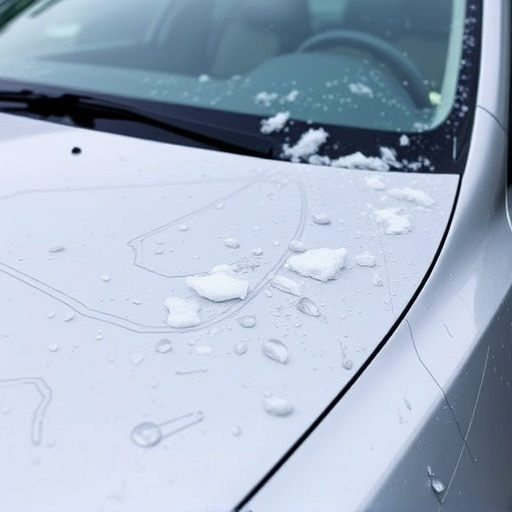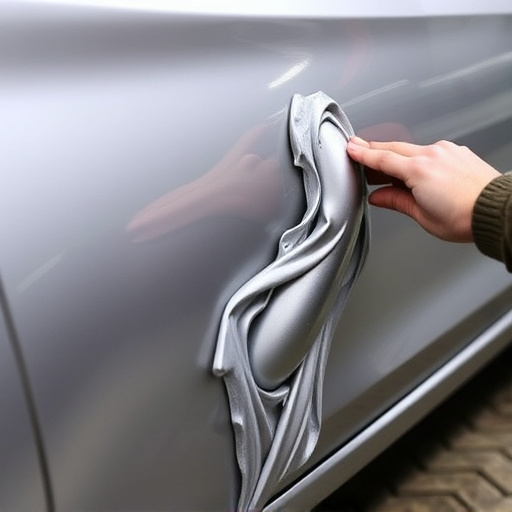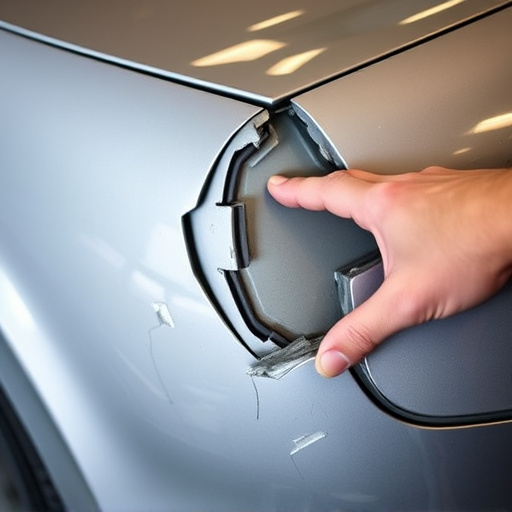Solvent-based auto paint offers a rich finish and easy application but raises environmental concerns due to solvents. Safety measures, including ventilation, PPE, and proper coating techniques, are crucial for user and environmental protection. Responsible disposal through specialized facilities is essential to minimize VOC emissions and ecological impact. Auto workshops can adopt eco-friendly methods like paintless dent repair to reduce solvent waste and promote sustainable auto care.
Working with solvent-based auto paint requires a deep understanding of its properties and inherent risks. This comprehensive guide delves into the world of solvent-based auto paint, detailing its unique characteristics and potential dangers. We outline essential safety measures and best practices for application, ensuring professionals and enthusiasts alike can work effectively while minimizing exposure to harmful substances. Additionally, we explore proper disposal methods and environmental considerations, emphasizing responsible practices in the automotive industry.
- Understanding Solvent-Based Auto Paint: Properties and Risks
- Safety Measures and Best Practices for Application
- Disposal and Environmental Considerations
Understanding Solvent-Based Auto Paint: Properties and Risks

Safety Measures and Best Practices for Application

When applying solvent-based auto paint, prioritizing safety is paramount to avoid health risks and environmental contamination. Always ensure proper ventilation by working in a well-ventilated area or using a fume extractor, as these materials can release harmful vapors. Personal protective equipment (PPE), including gloves, safety goggles, and a respirator, is essential to shield against inhalation of paint fumes and skin contact with solvents.
Adhering to best practices for application further enhances safety. Use thin coats rather than heavy layers to minimize the use of solvent and reduce the risk of overspray. Maintain a clean work surface and regularly clean tools to prevent build-up of excess paint, which can lead to accidental exposure. For auto body services or vehicle dent repair involving extensive painting, consider turning to professionals at an auto collision center who are trained in handling these materials safely and efficiently.
Disposal and Environmental Considerations

When it comes to disposing of solvent-based auto paint, it’s crucial to prioritize environmental safety. These paints contain volatile organic compounds (VOCs) that can contribute to air pollution if not handled and disposed of properly. Always follow local regulations regarding hazardous waste disposal. Many areas require specialized facilities for the removal of solvents and related materials from vehicle collision repair processes, ensuring minimal impact on the ecosystem.
In addition to proper disposal, eco-friendly practices can be adopted in auto maintenance workshops. Implementing paintless dent repair techniques, for instance, reduces the need for solvent-based paints and their associated waste. This method is not only better for the environment but also saves time and resources in the long run, making it a sustainable choice for modern auto care.
Solvent-based auto paint offers superior performance and finish, but its use requires a thorough understanding of its properties and associated risks. By adhering to strict safety measures and best practices during application, and responsibly managing disposal and environmental impact, you can ensure the protection of both yourself and the environment while achieving professional results with solvent-based auto paint.













